Have you ever made a significant purchase, only to realize that many important details about the product were left out of the sales discussion — either intentionally or unintentionally? This has happened to me more than once, which always means I’ll never buy from that company again.
This can happen with your 3D printer purchase, whether you’re buying a new machine as a hobbyist or a professional.
As someone who’s been on the other side — selling 3D printers to customers and training printer sales staff — I’ve seen the surprise on buyers’ faces when the full list of hardware, software, materials, accessories, warranties, and more is tallied. Or the disappointment — or worse — months or years later when the investment fails to pay off and is scrapped as a really expensive experiment.
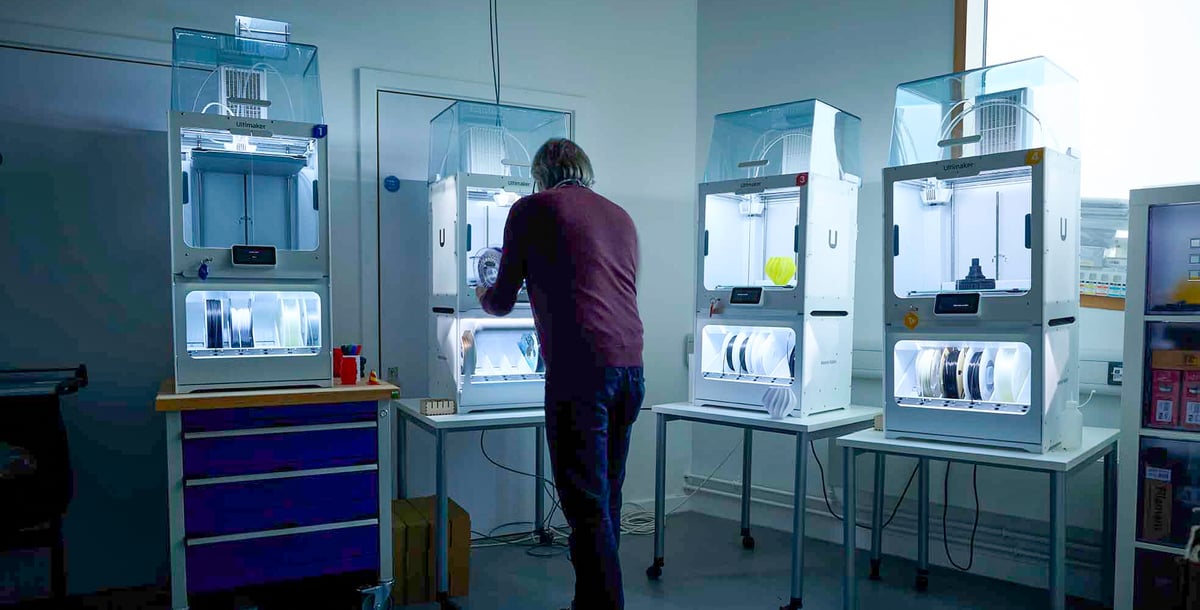
In other words, you calculate how many prints you need to make or sell to break even on the purchase price, with an ideal timeframe of 24 to 36 months. You envision your new 3D printer as a transformative asset capable of significantly boosting your productivity, your time to market for new products, and your competitiveness in the industry. It’s going to churn out prints, parts, and prototypes faster than you can keep up with it.
This bubble of excitement bursts quickly if you don’t fully understand the total cost of ownership before you buy. Your carefully calculated projected ROI will be flawed, at best.
Because so many potential variables can impact the total cost of ownership of a 3D printer, I recommend that first-time buyers align themselves with a qualified seller, which could be the manufacturer, a certified third-party reseller, or a full-service distributor like Dynamism or MatterHackers, which sells both consumer and pro printers. These companies have firsthand experience operating and maintaining 3D printers and can help you when you don’t know what you don’t know about owning a 3D printer.
For this reason and more, here are the top ten considerations about the total cost of ownership when investigating the purchase of a new 3D printer.
Hardware is Just the Start

Although my experience is primarily with professional and industrial 3D printers, much of this information also applies to desktop units – with some variation. For example, if you’re purchasing a consumer-level desktop 3D printer, your biggest expense actually will be the cost of materials, which can far surpass the price of the 3D printer in a short period of time, especially if it’s always running. Inversely, if you’re purchasing a large production machine, the most significant chunk of the ownership cost will likely be the hardware itself.
The most crucial point to remember here is to request a turnkey price quote — or figure it out on your own — covering everything required to print your first part, and I mean everything. This type of price quote will detail all the add-ons, materials, software and accessories required. It should give you a fuller picture of operating the printer, beyond the sticker price of the printer unit alone.
In addition to knowing all of the puzzle pieces you need, it’s essential to fully understand their capabilities.
Consider, for example, the build volume of your 3D printer. Is it large enough to print the size or quantity of parts you require or will you need to print in multiple batches? Perhaps buying two units of one type of printer is more efficient than one large-volume printer or vice versa.
Pro tip: Ask specific questions about the print volume because it may not be the same as the size of a part you can actually print. With many resin 3D printers and polymer powder bed fusion machines, the manufacturer will recommend you print a certain distance inward from the outer walls. This creates a variation, slight, but in some cases significant, between the print volume and the maximum size of a printed item.
While we’re talking about volume, consider your plans for growth in your hardware purchase. If you buy more printers, can they be networked? Is your hardware upgradeable if the vendor comes out with a new feature or will you have to buy an entire new unit?
Some printers offer the ability to upgrade components or modules, allowing you to adapt the printer to future advancements or changing requirements. While this can increase the initial cost, it may provide long-term cost savings. This can be a powerful case in choosing one printer over another.
Also consider the print speed. Many printer makers publish the machine’s maximum speed, which may be based on a particular material and a low resolution, and could be nothing similar to what you’ll actually be printing. Some printer makers even publish a “theoretical” print speed. The bottom line: ask how long your part will take to print.
Software Licenses

Most consumer-level desktop printers only require standard, free slicing software (Cura, Prusa, etc.) to convert existing digital models into instructions for the machine. For professionals, it’s a different story.
Before printing a 3D part, it must be modeled in 3D with CAD software and then saved to a format or file type compatible with your new printer. However, it is essential to remember that most printer makers and value-added resellers assume you already have the modeling workflow covered and do not include CAD software in their formal quotes.
Therefore, if you aren’t a CAD user, raise your hand early in the sales process and let the seller know. The good news is that many resellers also sell CAD software licenses and can help you with this need.
Most industrial 3D printers come with proprietary slicing software, which translates the 3D model (derived from CAD software) into a language that a 3D printer can translate and print. This process, called slicing, is where the tool paths for printing a specific part are created by converting the CAD data into G-code.
Pro tip: This proprietary slicing software that you must have to print anything can come with its own, separate licensing fee. This isn’t a worry for most desktop 3D printers, but step up to prosumer machines and above, and you pay, sometimes annually, for essential software licenses.
It’s also vital to know how many users will be authorized to use the software, whether there is a fee for periodic updates, and whether training for the software is included.
UltiMaker, for example, offers its Cura software for free but has higher tiers of software that offer more features, which can add hundreds to your purchase price. 3D Systems’ Oqton suite of software options for its fleet of machines, can add thousands of dollars to your purchase.
Material Costs
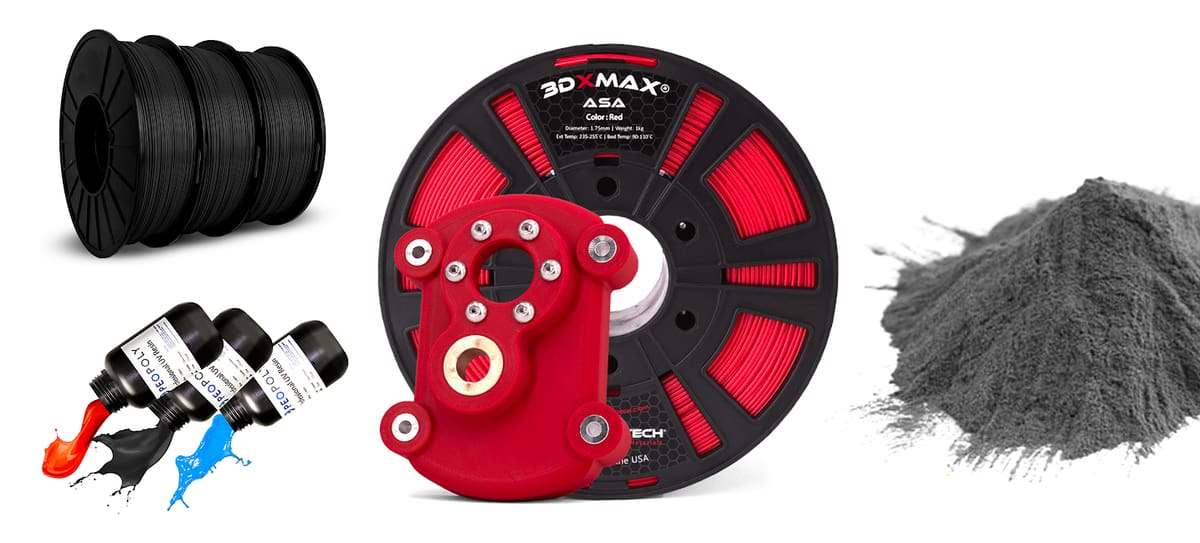
When purchasing a new vehicle, many people believe the most important number is the price of the automobile, paying less attention to fuel economy. But who wants to own a car they can’t afford to drive?
I recommend viewing your 3D printer purchase with a keen eye on how much you’ll spend monthly, quarterly, and annually on materials — filament, resin, or powder.
For filament, there are a host of automatic material calculators, such as this one by Prusa, where you upload your digital file, material, and a few other pieces of data, and it presents the dollar amount (or in about a hundred other currencies).
For powder- or resin-based machines or for industrial machines, it’s a bit trickier. Once you determine the parts you’ll be printing or which applications are driving most of your anticipated ROI, list the materials you will be using, such as aluminum powder or flexible resin, and ask your printer vendor for estimates.
Most vendors can help you with accurate estimates based on their materials matched to your part size and volume. In fact, insist that your sales professional does these calculations for you so you know they will be accurate. The objective is to calculate how many cubic inches of parts you will print each year in each material and factor these values into your TCO.
If you’re not locked in to buying proprietary materials from your machine vendor, seek advice from material makers, such as metal powder vendors and resin suppliers.
Pro tip: Keep in mind that some vendors say their machines are “open” material platforms, so you can use any material brand you want, but you may have to buy a license to actually “open” this feature. Fortunately, you’ll only find this on some professional resin and polymer powder systems, but be sure to ask.
Despite your best estimates, it’s common to end up printing a lot more than you anticipated. Once word gets out to other departments in your organization, they come running with things to print. (This can even happen with your neighbors at home.)
In addition to the cost of the materials, consider their storage requirements, which can range from simple filament spool racks to moisture- and humidity-controlled air-tight cabinets. Temperature and especially humidity can ruin materials so you’ll need to invest in a storage solution.
Pro tip: Suppose the seller attempts to incentivize you or your company to purchase sooner than your intended and stated timeline. In that case, you may be able to negotiate free material with your initial purchase or a discounted price on material for a predetermined amount of time. Remember, when you are being asked to do something that’s above and beyond, it’s an acceptable business practice to ask for something in exchange—provided you’re being reasonable.
Spare Parts & Consumables
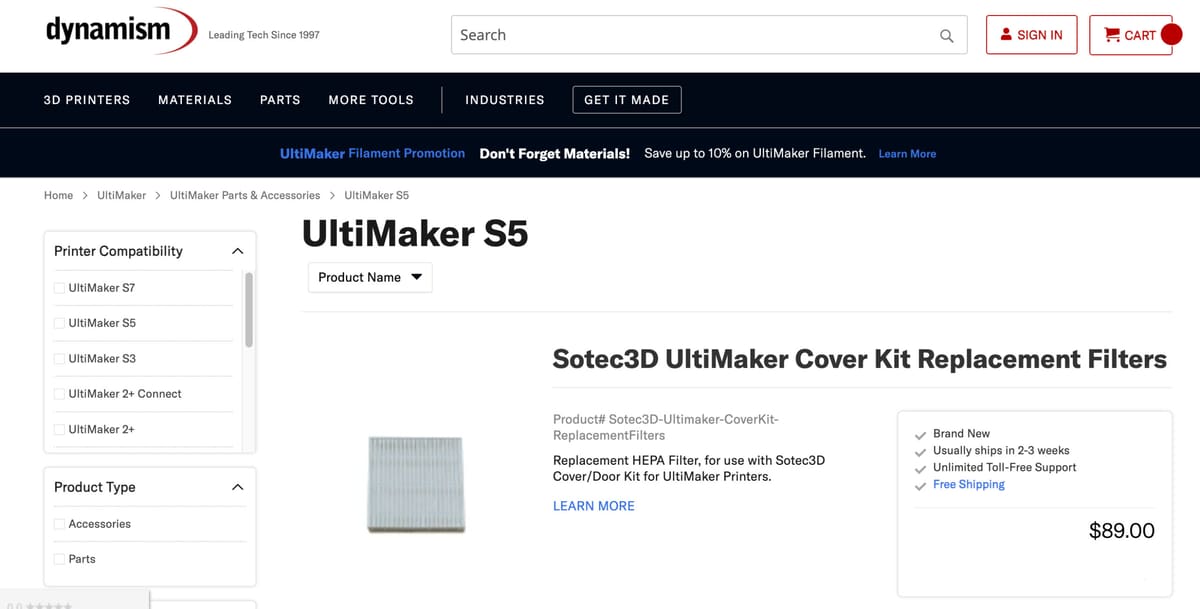
Regardless of whether you have a basic desktop 3D printer or a production-grade additive manufacturing system, parts will wear out.
The Pareto principle, also called the 80/20 rule, states that in many instances, 80% of consequences are derived from 20% of causes. I have witnessed this principle in action firsthand on countless occasions and can testify to its importance when planning for spare and consumable parts to have on hand in your inventory.
A seasoned sales professional who is worth their salt should have access to the specific 80/20 items you should keep on hand, such as nozzles, bearings, and lead screws. However, you should take it upon yourself to request this information, perhaps ask: “Will you provide me with a price list of the spare parts that are most likely to fail or need to be replaced, and how often, so I can factor this cost into our TCO and ensure they are adequately inventoried to reduce machine downtime?”
Some machines come with spare parts upfront, included in the initial purchase price. Routinely replaced parts on a desktop FDM printer include nozzles and entire hotend assemblies, heating elements, build surfaces, and fans. For resin 3D printing, FEP film, build platform, resin vat, and the light source can wear out. With professional technologies, such as SLS and other powder-based options, you likely won’t be replacing any parts, rather having scheduled maintenance by the vendor. Ask for those costs upfront (more on maintenance covered below).
Unexpected Post-Processing

Post-processing is another important cost that needs to be weighed heavily while determining the TCO of a new 3D printer purchase. Although support removal is among the most frequently discussed post-processing steps, countless other forms must be considered.
These can be divided into essential and optional. The processes that are absolutely required after printing include, for example, washing and curing your resin 3D printed parts. If you don’t wash and cure them, they’re completely useless. Although consumers can wash parts in isopropyl alcohol and cure them in sunlight, professionals need washing and curing machines that are more accurate and efficient. Many resin 3D printer makers, such as Formlabs and Nexa3D, also make these accessory machines, but some don’t, leaving you to source these from another manufacturer.
Another essential post-processing step that requires a sizable investment is depowdering and cleaning parts made with plastic or metal powder bed technologies, such as SLS, Multi Jet Fusion, binder jetting, metal laser powder bed fusion, and others.
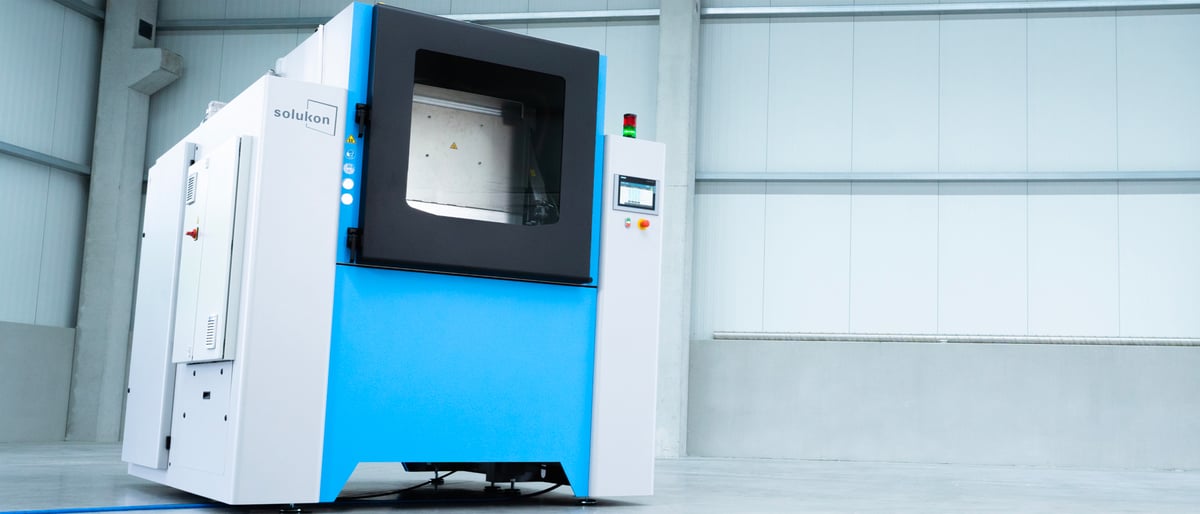
These technologies produce parts within a bed of powder material. After printing, they’re extracted from the bed and cleaned. The unused powder is collected for reuse. If digging through beds of powder sounds messy, it is. Not only is personal protective equipment required for workers, but special depowdering stations are essential for gathering the powder with the least amount of contamination possible. There are also cleaning stations and other tools for polishing, adding tens or hundreds of thousands of dollars to your TCO.
Metal 3D printed parts not only require depowdering (if using a powder-based technology) but may also require extra heat treatment in an industrial furnace to relieve stress.
Aside from essential post-processing, your part may require other finishing, which could be considered optional or essential depending on your applications, such as machining, assembly, dyeing, electroplating, welding, etc. If you don’t already own the equipment to carry out these functions, which are typical in a machine shop, calculate in the cost of outsourcing these steps.
Pre-Purchase Customer Support
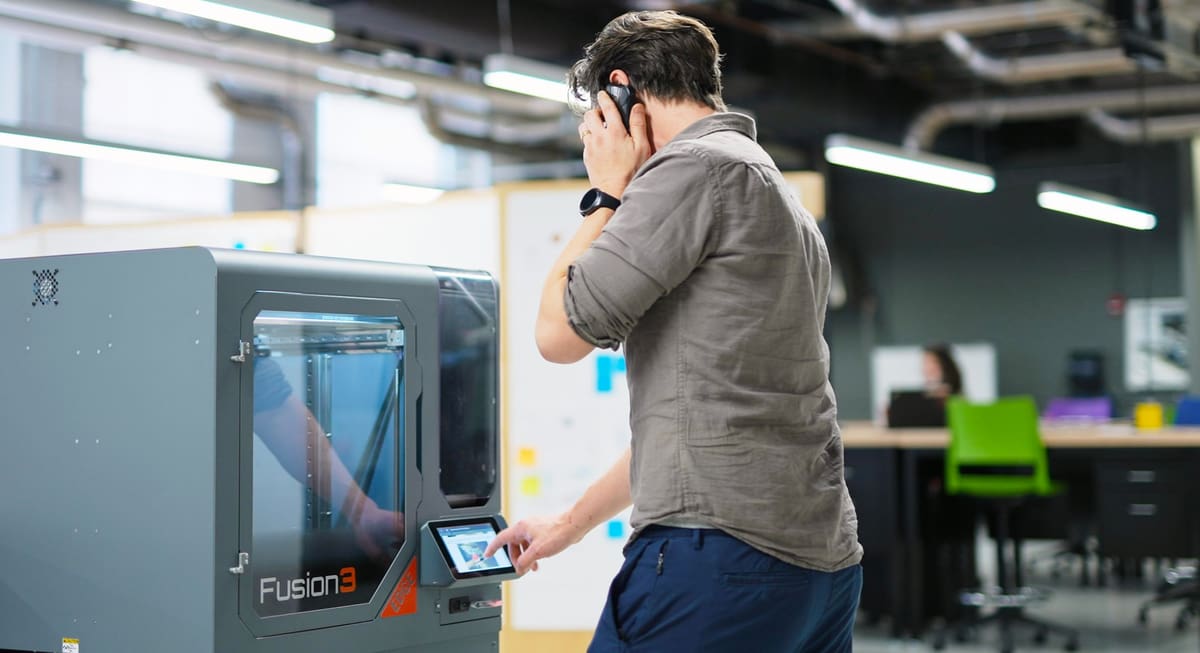
Don’t under estimate customer support when buying a new 3D printer and throughout the entire ownership experience. This is separate from the warranties and service contracts (covered below) and relates more to
pre-sales assistance by answering your questions about the 3D printer, its features, specifications, and capabilities.
At the consumer level, make sure there is customer support at all, and not just an online FAQ or trouble-shooting documents. Prompt and effective customer support should enhance your overall satisfaction, and ensure that you feel supported and valued throughout the purchasing experience.
At the prosumer level and above, you should have a dedicated sales pro willing to provide you with complete information. They should walk you through all the compatible upgrades or accessories that can enhance the performance or capabilities of your printer.
Warranty, Service, & Maintenance Contracts

When a 3D printer goes down, I liken it to a farmer having a tractor that won’t start during harvest season. When this happens, the farmer’s number one priority is getting the tractor running again. This analogy is similar to additive manufacturing in that the more dependent you become on your printer, the more it hurts when it stops functioning correctly.
There is never a good time for a 3D printer you’ve come to rely on to malfunction. For this reason, service and maintenance must be weighed heavily when determining a realistic TCO.
The first thing to consider is the manufacturer’s warranty. Here are five warranty-related questions that need to be asked on the front end and after the warranty has been read:
- When does the warranty expire?
- What is included in the warranty?
- What is excluded from the warranty?
- How much does an extended warranty cost?
- When’s the cutoff for purchasing an extended warranty?
If it’s within your budgetary parameters, I recommend purchasing an additional few years of warranty, so the service and maintenance of your hardware are covered until the ROI achieves break-even. This will prevent a scenario where the printer goes down outside the manufacturer’s warranty period (and before the printer has paid for itself), but there’s no budget to repair it—ouch! When this happens—everybody loses.
After the manufacturer’s warranty expires, and you don’t have the budget to extend it, at least purchase a service and maintenance agreement (if one exists). Typically, service and maintenance agreements are more affordable than an extended warranty, but don’t provide as much coverage. For example, depending on the terms of the agreement, a replacement part might be included, but not the technician’s labor or travel expenses, or vice versa. The bottom line is this: you need to know what service and maintenance agreements cost before buying a 3D printer so you can factor these numbers into your TCO and, more importantly, not be caught off guard.
Warranties and service plans vary widely by vendor and may offer several tiers of programs. Be sure you understand exactly what is in which offer.
Know Your Print Room Requirements
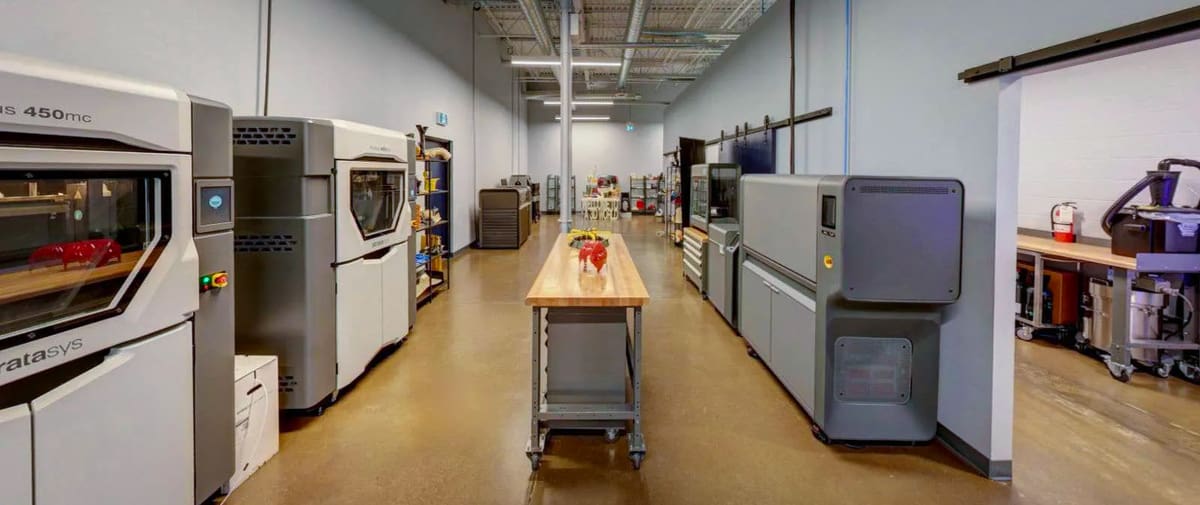
Believe it or not, just getting the printer installed is one of the biggest areas of misunderstanding in the entire process. Over the years, I have had a front-row seat to unthinkable scenarios resulting from buyers not considering location in their buying process.
One time, I witnessed a 6,000-pound printer hoisted with a crane through a second-story window as everyone nervously held their breath. I once saw a team of four men lay a $700,000 3D printer on its side in a failed attempt to fit it on a service elevator.
Here, let’s look at the various space, electrical, and environmental considerations of where you’ll 3D print.
Printer Space
Ensure the floor space where the 3D printer will be located has a level surface and can accommodate the machine’s size, weight, and dimensions. The space also must have the minimum required clearances around and above the printer so that all doors and panels can be opened and accessed for service and maintenance.
Be sure to determine what post-processing equipment will be required and where it will be located. In many instances, as a best practice, the post-processing of a 3D printed part is conducted in a room different from where the 3D printer is housed.
Pro tip: Depending on the technology, some manufacturers actually have a “do not exceed altitude” requirement, so if you want to install your new 3D printer in the Swiss Alps or the Canadian Rockies, do your homework first.
For consumers, your main concerns are fumes. When choosing the printer’s location, be sure also to consider emissions and any ventilation recommendations or requirements made by the manufacturer. It’s not recommended to house your printer in a bedroom. See the article linked below for more detailed information.
Electrical Requirements
Many years back, I sold a large format production system for about $500,000 to a customer who was new to AM. The buyer had made it very clear that they were working against a critical deadline. Unfortunately, unbeknownst to me, a step-up/step-down transformer was required due to the printer’s three-phase power requirements. Not only did my embarrassing oversight cause my new customer to miss their vital deadline, but it also added several thousand dollars in unforeseen and unbudgeted costs to the deal, which my company elected to absorb graciously.
Had the customer or I insisted on conducting a pre-purchase site-preparation evaluation, the need for a transformer would have been uncovered quickly. The hard lesson learned that I would like to leave you with as it relates to this story is simple: for polymer and metal professional and production-grade systems — always insist on a site-prep conversation or visit, preferably one that includes an itemized requirements checklist for accuracy and accountability.
Your facility’s power must meet the nominal voltage referenced in the manufacturer’s site preparation guide and printer user’s manual, and there will be no room for deviation. Therefore, consider this cost if electrical work must be done before installing your 3D printer.
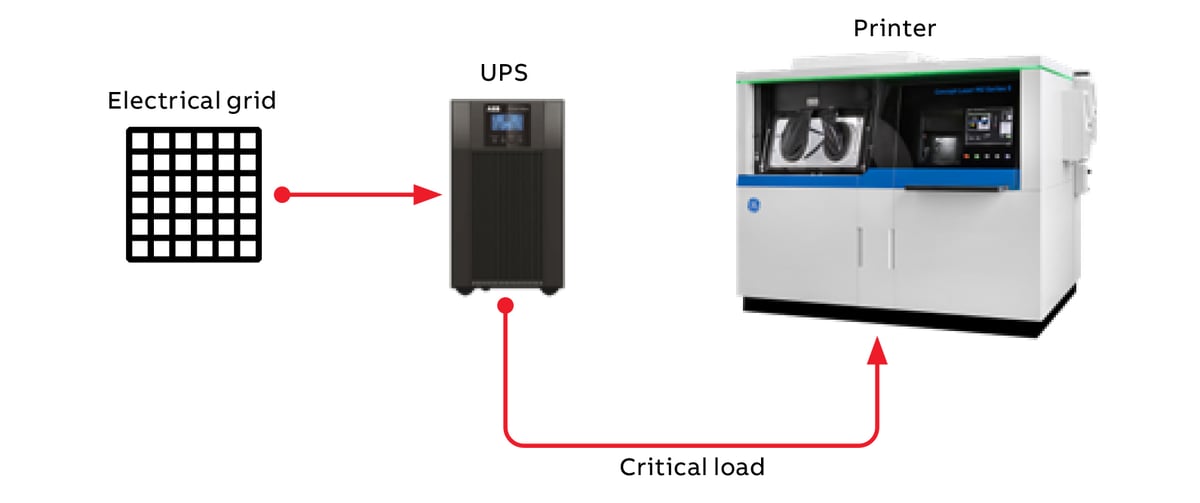
Does your company take power consumption into account when making CAPEX purchasing decisions? If so, you need to ask the sales professional to provide you with this data. Also, it’s important to remember that, based on the selected technology, the power used may depend on the material(s) you intend to run because certain materials may require higher melting temperatures. Also, consider the percentage of time you expect the printer to be running and any post-processing equipment that will be purchased.
As a reference point, the average 3D printer can consume between 50 watts (0,05kWh) to 500 watts (0,5kWh) per hour. Once you know the average rate you are paying for your electricity and the number of hours you intend to run your printer per day, you can determine the hourly and daily consumption and cost of electricity. Remember that the electricity used will depend on other factors, such as printing during peak or off-peak hours. For example, electricity prices in Texas are highest from 7 am to 11 am and from 3 pm to 6 pm, which are considered peak hours and may cost 25% more per kilowatt hour (kWh) than during off-peak hours.
For desktop units at home, determine exactly how much power your unit needs and if your wiring can handle it. If you live somewhere where power outages are common, consider a printer that will resume your print automatically after a power interruption. Many printers, once the power comes back on, will completely reset to default, which means you have to start the print again from scratch.
Pro tip: Some 3D printer manufacturers require the customer to supply the power cord but don’t always openly disclose this in their sales literature, so be sure to ask. Also, inquire about what happens to a build job if electrical power is lost while printing and if a battery backup is recommended.
WiFi & Network Requirements
3D printers use either WiFi or a local network or sometimes both, and depending on the manufacturer and slicing software, additional exceptions and permissions may be required in your environment. Some manufacturers also allow you to establish a direct 1 to 1 connection with the printer using your computer via a crossover cable that connects directly between the printer’s Ethernet port and your computer’s port.
Pro tip: If the 3D printer you are considering purchasing uses only a cloud-based slicing software, it may not meet your organization’s data security requirements. Most enterprises require a local access network connection.
Cost of Labor & Training

Although not always the case, the general rule of thumb is the more sophisticated the technology, the more labor and training is required. If your printer requires a full-time dedicated operator or a current employee will take on a new responsibility, the operator’s hours should be included in your TCO. Although 3D printers need very little attention once they are building a part, hands-on labor is required for the pre- and post-processing stages of the workflow, so calculate accordingly.
Aside from the user/operator training that should be included in the initial formal price quotation, be sure to consider recurring training and bringing new hires “up to speed” as the need arises.
Lastly, I am a big fan of virtual training in most cases. However, when it comes to learning how to use a new 3D printer, I would encourage you to take the advice of Benjamin Franklin, who said, “Tell me, and I forget. Teach me, and I remember. Involve me, and I learn.” That said, hands-on training is best for learning how to use your new printer.
For consumers, you might find hands-on training at local community colleges or libraries, or substitute hands-on with a virtual course.
Cost of Waste Disposal
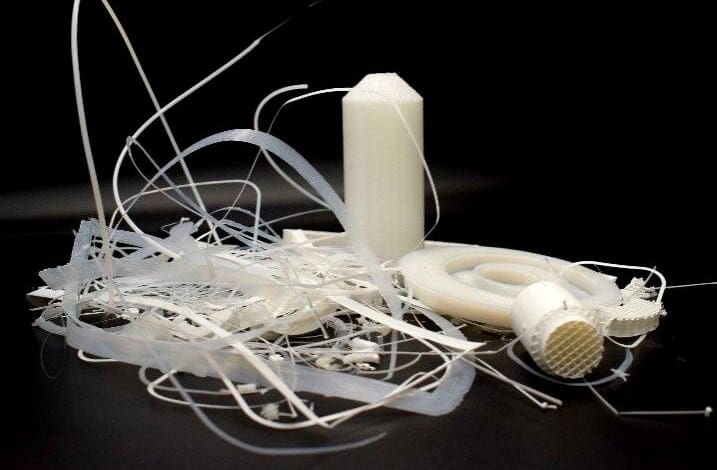
Depending on the technology, 3D printers can produce different types of waste ranging from empty material containers, support materials that have been removed, used filters, purged material, and so on.
For home and small business users, you’ll need to consider if this extra waste will over-fill your trash and recycling bins. Will you need to purchase additional bins? Will someone need to drive waste to a recycling center?
For more industrial operations, be sure to request Material Safety Data Sheets (MSDS) for any material used in the printing and post-processing workflow and provide them to your facilities personnel to help determine the cost associated with waste disposal, if any.
I once sold a 3D printer to a global defense contractor who could not get permission from their facilities director to pour anything down the drain in the area where the printer would be used. As an acceptable workaround, we satisfied the director’s concerns by only using filament material that had the option of breakaway support material (removed by hand). The version of the material that offered soluble supports required the parts to be soaked in a sodium chloride bath for hands-free support removal, which required the tank to be emptied into the drain occasionally. Cooler heads prevailed, and the problem was solved!
Final Thoughts

Adding a 3D printer to your toolbox can profoundly impact your company’s future trajectory and sometimes be a game changer. The more information gathered and understood before the purchase, the more realistic the expectations, and when expectations are managed correctly, the buying experience is optimal.
That said, buy like a pro by asking the questions above, working with sellers who transparently provide answers, and enjoying your journey into the world of additive manufacturing because it’s well worth the effort.
ABOUT THE AUTHOR
Chris Harris serves as the vice president of defense for a global manufacturer specializing in point-of-need additive manufacturing technology for military readiness and warfighters. He is the author of “Phase Selling for Additive Manufacturing” and has provided his proprietary sales training and consulting services to more than 200 AM companies from over 60 countries.
Chris also serves on the All3DP Pro Editorial Advisory Board. Connect with Chris Harris via LinkedIn.
License: The text of "What Vendors Don’t Tell You About the True Cost of 3D Printing" by All3DP Pro is licensed under a Creative Commons Attribution 4.0 International License.



